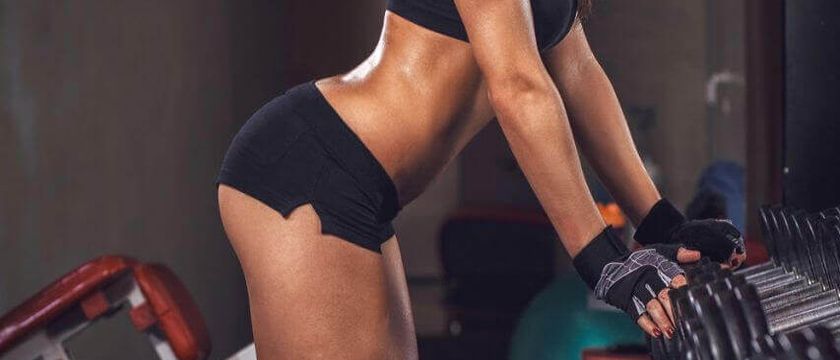
In this article, you will be able to understand the anatomy of glutes and learn the basic technique to firm and strengthen glutes.
Overview of Glutes
The gluteal muscles are a group of three muscles which make up the buttocks: the gluteus maximus, gluteus medius, and the gluteus minimus three muscles originate from the ilium and sacrum and insert on the femur. The functions of the muscles include extension abduction, external rotation and internal rotation of the hip joint. The gluteus maximus is the biggest of the three glute muscles. It connects to the side of the sacrum and thighbone, or femur, and draws the femur into the hip attachment. The gluteus medius muscle sits halfway under the maximum muscle and associates the ilium, regularly alluded to as the hipbone, to the highest point of the femur. The gluteus minimus, as its name suggests, is the smallest of the three gluteal muscles and lies beneath the other two muscles in the buttock region. It stabilizes the pelvis during walking or running and abducting the thigh when the leg is not weight bearing.
Training Glutes
Hip Thrust
The Hip Thrust is a glute exercise designed to improve your strength, speed, and power by teaching optimal hip extension. It helps in improving glute strength, increasing glute size, improving aesthetics of glutes and reducing the overall risk of injury, as strong glutes can help take stress off the lower back and also positively affect the mechanics of the hips, knees, ankles, and feet. Start seated on the ground with a bench straightforwardly behind you. Have a stacked barbell over your legs. Utilizing a fat bar or having a cushion on the bar can enormously decrease the distress caused by this activity. Roll the bar with the goal that it is specifically over your hips, and recline against the seat so your shoulder bones are close to its highest point. Extend as far as possible, then reverse the motion to return to the starting position.
Bulgarian Split Squats
The Bulgarian split squat is great for adding muscle size to your glutes. It builds significant single-leg strength and stability. It’s a great functional movement with a variety of mobility and flexibility. Get yourself a step, the bench that you can lay a foot on, it should be about knee stature. Get into a forward thrust position with middle upright, center propped and hips square to your body, with your back foot raised on the seat. Your driving leg ought to be a large portion of a meter or so before the bench. Lower until the point that your front thigh is relatively flat, keeping your knee in accordance with your foot. Try not to give your front knee a chance to move past your toes. Drive up through your front foot rear area back to the beginning position, again keeping your movements measured.
Barbell walking lunges
Doing lunges is an incredible method to build up your thigh muscles, advance hip steadiness and lift your athletic execution since this activity connects every one of the muscles in the leg and influences them to experience an extensive variety of movement. In spite of the fact that bodyweight lunges work incredibly for conditioning up your thighs and quads. Begin standing with your feet shoulder-width apart and a barbell across your upper back. Step forward with one leg, flexing the knees to drop your hips. Plummet to the point when your back knee almost contacts the ground. Your stance ought to stay upright, and your front knee should remain over the front foot. Drive through the rear area of your lead foot and stretch out the two knees to raise yourself go down.
Benefits of Glutes
Well developed Glutes muscles have numerous benefits and we have some of the best-reported benefits underneath:
- You can have better posture if you develop glute muscle by training with isolation and technique
- Strong glute muscle provide support to the hip and pelvis bone
- Improve the flexibility and movement of the midsection
Precautions/Mistakes of Glutes muscle training
We all tend to do some mistakes and avoid taking precautions while training glutes muscle. We have specified some of the common mistakes and precautions underneath:
- Not warming up the muscle before training
- Flexibility is the key for better glutes but we avoid doing flexibility training
- Training glutes muscles by doing squats and deadlift only